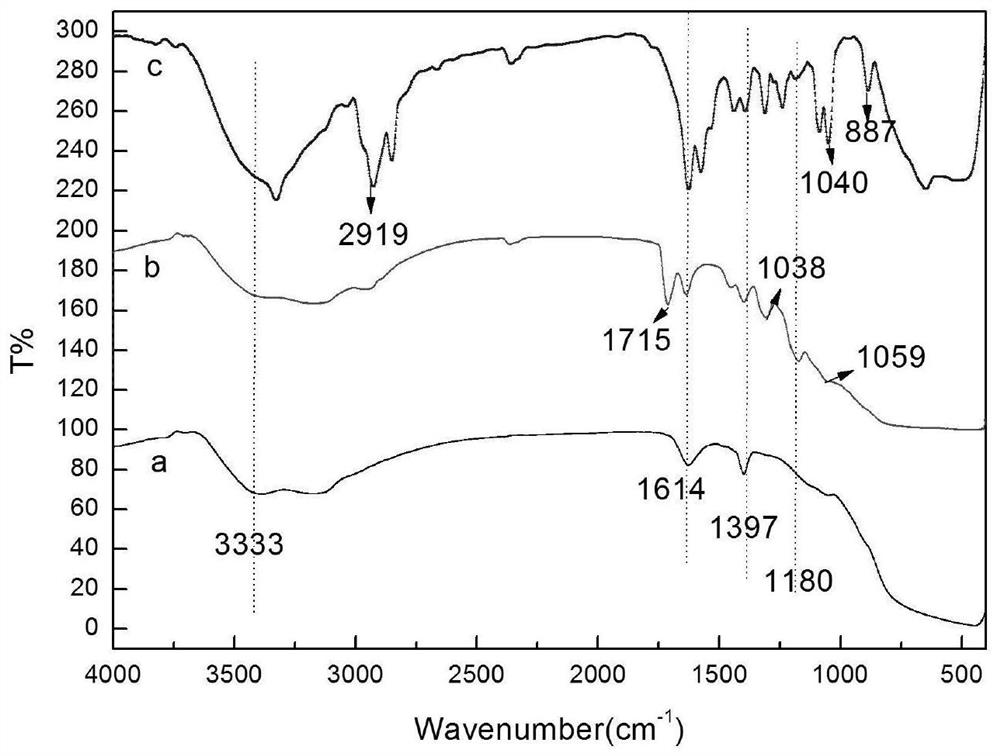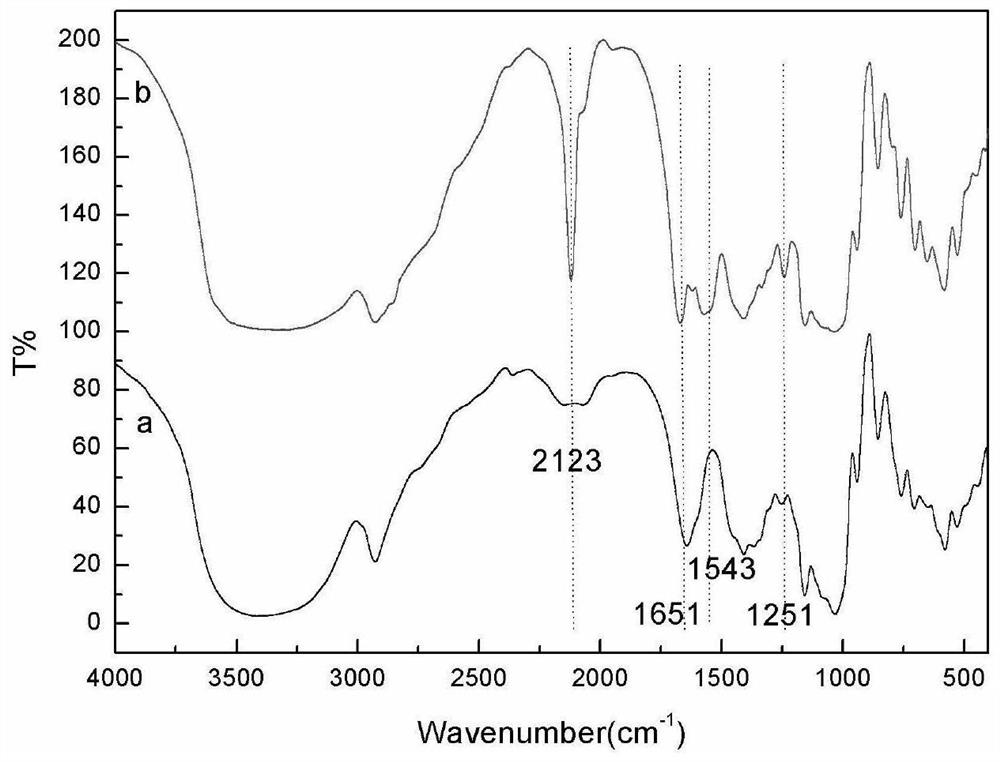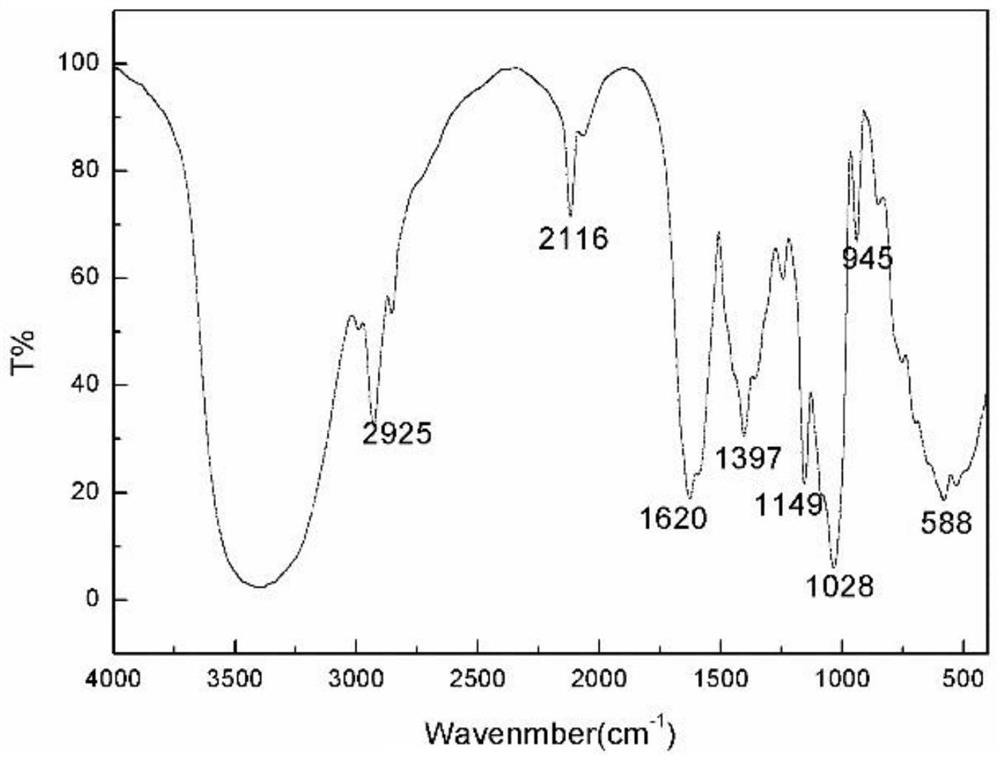Inclusion compound monomer based on subject-object recognition, preparation method of inclusion compound monomer, starch-styrene-acrylic antibacterial emulsion, and preparation method and application of starch-styrene-acrylic antibacterial emulsion
A technology of host-guest identification and inclusion complex, which is applied in textiles and papermaking, anti-biological reagent addition, papermaking, etc., can solve the problem of no antibacterial properties, and achieve the effect of not easy to break, improve high viscosity, and high viscosity
- Summary
- Abstract
- Description
- Claims
- Application Information
AI Technical Summary
Problems solved by technology
Method used
Image
Examples
preparation example Construction
[0037] The invention provides a method for preparing an inclusion compound monomer based on host-guest recognition, comprising the following steps:
[0038] Mix titanium dioxide, a silane coupling agent, and a benzene-containing solvent for coupling modification to obtain a coupling-modified titanium dioxide; mix the coupling-modified titanium dioxide, adamantane chloride, a chlorinated hydrocarbon solvent, and a first amine compound catalyst Mixing and hydrophobic modification to obtain a double-modified titanium dioxide guest;
[0039] Mixing β-cyclodextrin, methylolacrylamide, amide solvent and a second amine compound catalyst to carry out enamide methylation reaction to obtain the main body of alkenyl β-cyclodextrin;
[0040] Disperse the alkenyl β-cyclodextrin main body in water to obtain a main body dispersion;
[0041] Dispersing the double-modified titanium dioxide guest into ethanol to obtain a guest dispersion;
[0042] The host dispersion liquid and the guest disp...
Embodiment 1
[0086] Prepare double-modified titanium dioxide guest, the steps are:
[0087] (1) Weigh 2g of titanium dioxide and 4mL of silane coupling agent KH570 in a round-bottomed flask, use toluene as the solvent, conduct coupling modification at 80°C for 24 hours, cool, filter, and use toluene, deionized water and absolute ethanol in sequence After washing, filtering and vacuum drying, the coupling modified titanium dioxide is obtained.
[0088] (2) Weigh 0.5 g of the coupling-modified titanium dioxide prepared in (1) and 0.5 g of adamantane chloride in a round-bottomed flask, use 15 mL of chloroform as a solvent, and 0.5 g of dimethylaminopyridine as a catalyst at 60° C. After reacting for 48 hours, the product was washed with deionized water and absolute ethanol, filtered, and vacuum-dried to obtain the double-modified titanium dioxide guest, which was set aside.
[0089] Preparation of alkenyl cyclodextrin: Weigh 5g of β-cyclodextrin and 5g of methylolacrylamide in a round bottom...
Embodiment 2
[0093] Repeat the preparation process of Example 1, the only difference is that the double-modified titanium dioxide guest is 0.5g, and the main body of alkenyl cyclodextrin is 1g. Compound monomer, the yield is 56.9%.
PUM
| Property | Measurement | Unit |
|---|---|---|
| Burst resistance | aaaaa | aaaaa |
Abstract
Description
Claims
Application Information
 Login to View More
Login to View More - R&D
- Intellectual Property
- Life Sciences
- Materials
- Tech Scout
- Unparalleled Data Quality
- Higher Quality Content
- 60% Fewer Hallucinations
Browse by: Latest US Patents, China's latest patents, Technical Efficacy Thesaurus, Application Domain, Technology Topic, Popular Technical Reports.
© 2025 PatSnap. All rights reserved.Legal|Privacy policy|Modern Slavery Act Transparency Statement|Sitemap|About US| Contact US: help@patsnap.com



